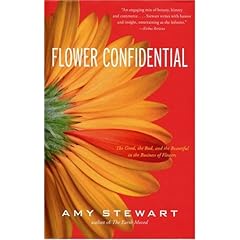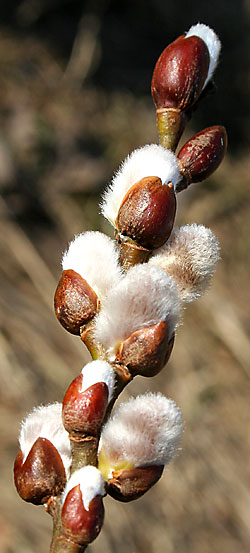 Full disclosure: My wife is allergic to flowers. I never bring them in the house. The only times I’ve purchased flowers were a corsage for the senior prom and an internet mail-order orchid plant for my left-coast sister when she got married a few years ago.
Full disclosure: My wife is allergic to flowers. I never bring them in the house. The only times I’ve purchased flowers were a corsage for the senior prom and an internet mail-order orchid plant for my left-coast sister when she got married a few years ago.
I finally finished reading Amy Stewart’s Flower Confidential this week. It’s not that it wasn’t a page-turner for this guy who’s only payed for flowers twice. It was. I’m just a slow reader when it comes to bed-side books.
I’d compare Amy’s book to works by my first favorite non-fiction writer, John McPhee. McPhee had a talent for writing at length about subjects that I wasn’t sure I was interested in — looking at them from every point of view — and making me glad I savored every page. Amy is similarly talented.
The story she tells is so familiar to me. I couldn’t help but draw parallels at every turn with the organic farmers I worked with in the ’80s and ’90s. That was a time when the globilization of agriculture and commoditization of foodstuffs like corn and soybeans (which had begun decades earlier) became totally accepted as business as usual. At the same time, there were (relatively) small voices screaming that maybe this isn’t such a good thing.
It was a time when the slow but steady growth of organic farming was starting to pick up steam. There was a recognition that there was a small group of consumers who wanted something different — something fresh, local, and in-season. Something flavorful. And something grown with a recognition that buying foods raised in certain ways can help heal the huge negative impacts on people and the land caused by other ways of farming.
The main take-home from Amy’s writing is that flowers have become faceless global commodities — just like corn and beans. With the availability of rapid shipment from growing areas to consumers, production will continue to slide to wherever labor is cheapest and environmental standards the most lax. Even with rising energy costs for transportation, flowers are a relative bargain to move around. Shipping something that’s worth a dollar a stem makes a lot more sense than moving around corn grain, for example. When corn sells for $2 a bushel, a bucks-worth weighs 28 pounds.
Another tidbit that caught my eye: Half of flower sales are on Valentine’s Day? Take a clue from the turkey industry and figure out a way to spread sales through the year.
If I was a flower-buyer, I think I would be as likely to buy a rose in February as I would be to buy a package or rock-hard tomatoes at that time of the year.
So now the floral industry is moving to certify flowers produced in more loving ways. That’s a good thing because it give consumers a chance to exercise at least some degree of choice about how the flowers they buy are grown. But ask any long-time organic farmer what they think of corporate agriculture getting into organic farming. It hasn’t been pretty.
I would never suggest that folks stop buying flowers. It wouldn’t do any good. People love flowers. But I would suggest folks vote with your purchases to help foster a sensible sustainable ‘flower system’: In order:
- Grow your own as much as possible.
- Patronize local growers and florists for in-season flowers grown as closeby as possible.
- Buy from sources farther away that are approved by the various environmental and labor-practice certifiers Amy writes about.







